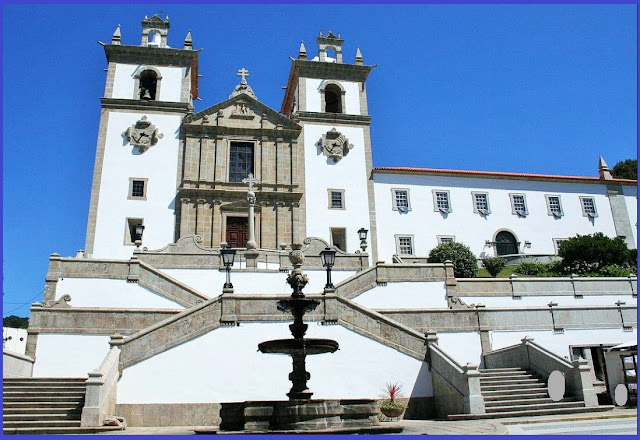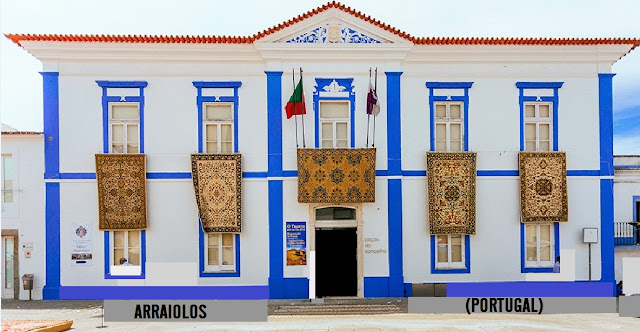ARRAIOLOS
N 38º 43' 22''; W 7º 59' 04''
Arraiolos is a Portuguese village located in the district of Évora, Region of Alentejo, sub-region of Central Alentejo, with 3 386 inhabitants (2012). It is the seat of a municipality with 683.75 km² in area and 7 363 inhabitants (2011), subdivided into 5 parishes. The municipality is limited to the north by the municipalities of Mora and Sousel, to the east by Estremoz, to the south by Évora, to the southwest by Montemor-o-Novo, and to the northwest by Coruche.
The municipality consists of 5 parishes: Arraiolos (3 386 inhabitants) Vimieiro (1,589 inhabitants), Igrejinha (932 inhabitants), Union of Parishes of Gafanhoeira, and Sabugueiro (890 inhabitants), Union of Parishes of São Gregório and Santa Justa (566 population).The municipality of Arraiolos stands out for its History, Heritage, Gastronomy, and Wines. In fact, the municipality of Arraiolos, and its particular climate, produces renowned wines, mainly from Monte da Ravasqueira cellars, Comenda Grande, Herdade das Mouras de Arraiolos, among others.
Patrimony
Arraiolos is diverse, revealing the multiplicity and diversity of peoples that inhabited this region, influencing the built heritage, intangible heritage, and handicrafts of this typically Alentejo village. The Castle of Arraiolos is the best-known monument in the village, one of the only circular castles in the world, towering in relation to the whitewashed houses, a castle located at more than 410 m above sea level, containing the Igreja Matriz do Salvador, a monument previous to the very castle, with a frescoed interior. The Pousada Convent of Nossa Senhora da Assunção, former Convento dos Loios, former convent transformed into a pousada in 1995, after several decades of neglect, has a church with tile panels from the 17th and 18th centuries. The Church of Misericórdia de Arraiolos, located in the historic center of the village, on the well-known Rua dos Tapetes (Rua Alexandre Herculano), has an exterior simplicity, but a very rich interior, with a baseboard of tiles from the 16th century, a frescoed ceiling, dated from the 16th century, with geometric and symmetrical motifs, thought to be inspired by Arraiolos carpets, a set of tile panels from the 17th and 18th centuries, with the works of mercy and an altar, in gilt, from the 16th century.
The Palace of the Counts of Vimieiro and its obelisk, although in ruins, is also a reference to the county's heritage. Also noteworthy is the Palácio da Semper Noiva, the Fonte da Pedra.
Crafts
Arraiolos Carpets are the essential symbol of the village of Arraiolos. With centuries of history, hand-embroidered by generations and generations of embroiderers, they are part of the best-known handicrafts in Portugal, and their candidacy for World Heritage is being prepared. They are the exponent of knowledge passed from generation to generation, being a craft of odd value, spread across the four corners of the world. In Arraiolos there is the Arraiolos Carpet Interpretative Center, in Praça do Município, where you can learn about the history of carpets, as well as the production processes, from wool, to the final product.
The Municipality is also rich in Montado, so cork articles are also part of local crafts, as are clay articles.
Another traditional element is the Alentejo chairs, in wood, decorated with bright colors.
Economy
The activities of the primary sector determine the county's economy, mainly milk production, cork extraction, wine production - and granite extraction. In industrial terms, companies related to metallurgy, the carpet industry, and the small sausage, liquor, cheese, and honey industries stand out. In terms of services, trade is visible, but tourism plays a major role in the economy.
Leisure and Nature
Throughout the municipality, there are areas for leisure and contact with nature: Public Garden, Arraiolos Children's Park, Vimieiro Urban Park, Vimieiro Picnic Park, and Fountain, Arraiolos Ecopista, Divor Dam, "Entre Pontos e Colinas ", Divor River Trails (Aldeia da Serra)
💓💓💓💓💓
SEARCH IN ALPHABETICAL ORDER
IN THE DISTRICT OF ÉVORA

Mora;
💓💓💓💓💓
Return to mainland Portugal &
the Azores and Madeira islands


















